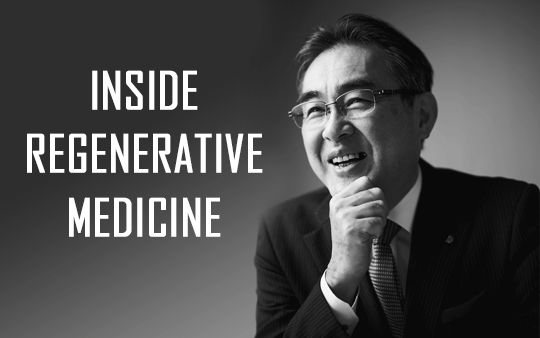Jan. 5, 2022[INSIDE REGENERATIVE MEDICINE]
What is now possible with regenerative medicine technology

It is the catchphrase of regenerative medicine, "You can cure an incurable disease." It raises expectations of a kind of treatment that can achieve things that pharmaceuticals and medical devices cannot. As we have seen, the original concept was to create artificial organs that would function like the organs from a donor that are used in organ transplants. With advances in science, it has become possible to increase many types of human cells through cell culturing technology. There have been remarkable developments in basic biological research conducted using these cells. However, regenerative medicine was born out of the idea that there might be some way of using these cultured cells in medical treatment. The prototype for this type of treatment was one that aimed to heal damaged skin.
Regenerative medical technology first began to be applied to skin back in 1975, before the term “regenerative medicine” even existed. Professor H. Green et al. of Harvard University in the United States succeeded in culturing human skin cells. What was even more interesting was that these cultured skin cells could be grown in stacked layers to create membranes with which to treat patients suffering from major burns, etc. Quite literally, this was artificial skin made using the patient’s own cells. According to Professor Green’s group, enough skin to cover the entire body could be grown in 2 weeks from a sample of healthy skin the size of a postage stamp. In 1983, this method was used to save the lives of two children who had sustained burns over more than 90 percent of their bodies. This experimental product became the basis for our company’s autologous cultured epidermis “JACE”.
The basic scheme of regenerative medicine using the patient’s own cells unfolds like this: We harvest a small amount of healthy skin from the patient. We extract cells from the tissue sample and use cell culturing technology to increase them. We then render them into suitable form for transplantation so that they can be transplanted like artificial organs or tissue. It seems that we should be able to use this same method to create many other types of organs and tissues, doesn’t it?
However, whether our expectations for regenerative medicine can be realized depends on how we create the next new method of transplantation to follow the successes we have had with skin. Already in Japan, regenerative medical products are available in the form of cartilage for treating knee joints, muscle cells for healing the heart, and marrow-derived cells for repairing spinal injuries. We have also created products related to the cornea of the eye. However, we are still only halfway to the organ regeneration that so many of you are hoping for. As it stands, the things that have become possible thanks to regenerative medicine are by no means numerous. However, we are steadily making progress toward the medical treatment of the future.
January 5, 2022


